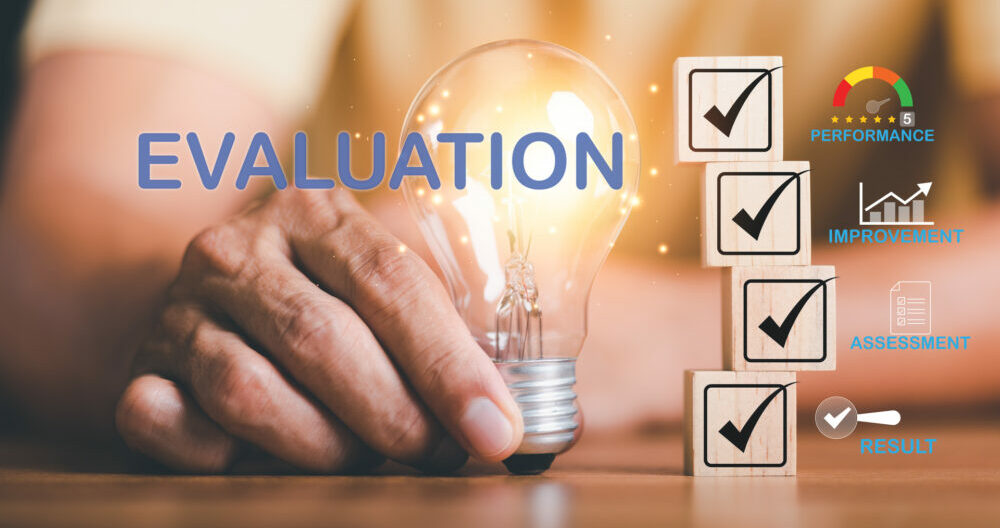Discover 7 proven, stress-free ways on how to evaluate small business performance. Learn practical tips to measure growth, track success, and avoid costly mistakes.
Running a small business sometimes feels like juggling flaming torches while riding a bike—you’re moving fast, but you’re not quite sure if you’re heading in the right direction.
That’s why knowing how to evaluate small business performance is so important.
Good news: you don’t need to drown in spreadsheets or hire a pricey consultant to figure out whether your business is thriving or barely keeping its head above water.
With the right methods (and a little patience), you can measure what really matters, spot problems early, track your progress, and and steer your business toward growth by making smart decisions —without losing sleep!
Let’s look at 7 proven ways you can check your business pulse—without the stress.
1. How to Evaluate Small Business Performance With Financial Ratios – The Basics Matter
Numbers tell the truth. If you skip them, you’re basically driving blind. The first stop on the performance train? Your financial statement evaluation.

Numbers don’t lie, and they’ll give you a clear view of where your business stands. Most importantly, be brutally honest with yourself – no excuses!
Look at:
- Cash flow health – Do you have money left after expenses?)
- Profit margin evaluation – Are you actually making money, or just moving it around?
- Sales performance analysis (Are your sales growing steadily or stuck in neutral?
Pro tip from experience: Early in my own business journey, I made the rookie mistake of chasing sales growth while ignoring cash flow.
On paper, revenue looked amazing, but bills pile up faster than payments. Hard lesson: banks don’t take “future sales” as payment.
2. Use Key Performance Indicators (KPIs)
If you want a quick business “report card,” key performance indicators for small business are your best bet.
KPIs help you measure everything from operational efficiency to customer retention and they turn vague gut feelings into hard numbers you can actually act on.
A few simple KPIs you can start with:
- Revenue per employee (Are you getting enough output for your payroll?)
- Customer acquisition cost (Are you spending too much to get new clients?)
- Net promoter score (Do customers love you enough to recommend you?)
KPIs make progress (or problems) visible—and that visibility is gold. These metrics turn vague gut feelings into clear data you can act on.
3. How to Evaluate Small Business Performance Through Customer Feedback
Customer voices are like the secret sauce in a good recipe—you can’t ignore them. If you’re serious about learning how to evaluate small business performance, keep an ear open for what your customers are saying.
Ways to do it:

- Send out quick surveys after sales
- Check online reviews (even the grumpy ones)
- Monitor customer satisfaction evaluation scores (repeat purchases and referrals)
📌 Callout: Customers spot blind spots faster than we do. Once, I thought our service was top-notch until feedback revealed clients felt ignored after purchase.
A simple follow-up call system turned that around—and boosted repeat sales by 30%.
4. Measure Employee Productivity
Happy employees are productive employees, and they can make or break a small business. Analyzing employee performance doesn’t mean micromanaging; it means making sure your team has the tools, training, support, and motivation to succeed.
Try tracking:
- Sales per employee
- Project/Task completion times
- Employee turnover rates
And yes, sometimes the problem isn’t the team—it could be clunky processes. If people keep stumbling, it might be time for a workflow optimization or a training upgrade.
This often fixes more than micromanagement ever could!
We help fix clunky processes.
5. Evaluate Small Business Performance by Benchmarking Competitors
Sometimes it feels like you’re running in circles until you peek over the fence. Using performance benchmarking for small firms helps you see if you’re on track—or falling behind..
Compare things like:
- Average revenue growth in your industry
- Shifts in market share
- Competitor pricing and offers.
It’s not about copying competitors; it’s about making sure you’re not missing the boat while they’re sailing off with your customers. Learn to spot the gaps before they become lost opportunities.
6. Keep an Eye on Long-Term Sustainability

Short-term wins feel great, but long-term survival is the real prize.
That’s why part of how to evaluate small business performance includes checking whether your business can weather storms. Can you adapt and scale?
Ask yourself:
- Is your business performance analysis focused only on this month’s numbers, or also planning for the next five years?
- Do you have systems in place for scaling?
- Can you pivot if the market shifts?
🚀 Callout: Businesses that ignore long-term business sustainability often burn out faster than you can say “economic downturn.”
7. Evaluate Small Business Performance With Dashboards and Data Tools
Finally, don’t be afraid to get techy. Tools like a performance dashboard for SMBs can make your life easier by pulling all your business health check strategies into one screen.
Benefits of a Dashboard:
- Monitor ROI for small businesses in real-time
- Visualize operational performance monitoring
- Track trends at a glance instead of drowning in spreadsheets.
Think of it as your business Fitbit—it won’t do the work for you, but it’ll let you know when it’s time to speed up or slow down.
Conclusion
Figuring out how to evaluate small business performance doesn’t have to feel like rocket science—or a root canal.
By focusing on financial health, tracking company performance through KPIs, listening to customers, monitoring employees, and using data-driven business evaluation, you’ll spot strengths and fix weaknesses before they spiral out of control.
Need Help? Contact BCINC for Assistance Now!Related Articles
- 14 Effective Customer Service Tips: How to Turn Complaints into Praise
- How to Use Key Metrics for Small Business to Answer 5 Questions
FAQs on How to Evaluate Small Business Performance
What’s the simplest way to evaluate small business performance?
Start with the basics: review cash flow, profit margins, and customer feedback. These give you the quickest snapshot of business health.
How often should I check small business performance?
Monthly is ideal for most metrics, but some (like sales or cash flow) are worth monitoring weekly.
Why are KPIs important in evaluating small business performance?
KPIs transform vague goals into measurable results, making it easier to adjust strategy before problems snowball.
How do I measure employee productivity without micromanaging?
Focus on outcomes—sales, project completion, or customer satisfaction—rather than hovering over every task.
Can customer feedback really improve performance?
Absolutely. Customers often spot blind spots you’ve overlooked, and their feedback can directly drive growth.

